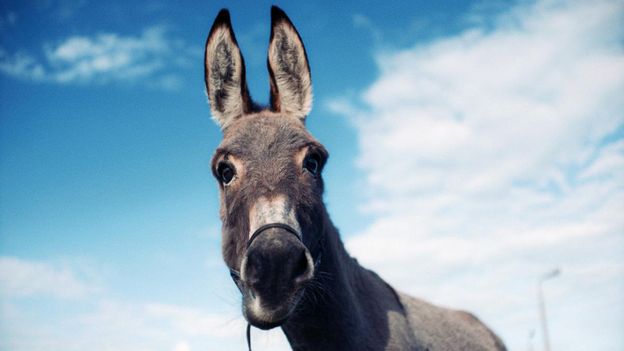
Midway through the film, the donkey, having made his escape from a sanctuary and trekked through field and forest, wanders into a small Polish town. “The donkey was supposed to look at fish in a [shop window] but it looked, and it saw itself, its own reflection, and started to make a noise,” EO’s chief wrangler Agata Kordos tells BBC Culture. “That was a spontaneous reaction and was actually used in the film. Unlike a dog, which you can train to make noise on command, a donkey doesn’t do that. Sometimes you think that you’ve trained the donkey to make a noise on command, but it doesn’t work that way – he does whatever he likes.”
Moments like this, Pick suggests, are appearing more frequently in arthouse films and are what mainstream cinema should aim for: “Animals are narrative disruptors. Unless they’re trained, unless their movements are predictable, they introduce all these things that makes cinema feel wonderful – spontaneity, unpredictability, movement, dynamism and liveliness. If the director is committed to allowing that to happen, I think that makes for a great animal film.”
Animals taking centre stage
Animals have been on camera since cinema’s inception, with the first filmic technology producing Eadweard Muybridge’s Horse in Motion (1878). The earliest film to star an animal actor, Rescued by Rover (1905), saw a brave dog reunite a kidnapped baby with its parents, featuring collie Blair – soon to become a household name – as the hero. “These narratives of love, loyalty and affection from animals have travelled all the way through cinema,” Dr Claire Parkinson, author of Popular Media and Animals, tells BBC Culture. “There’s this romanticised reassurance of the human-animal bond.” In his 1993 book, Picturing the Beast, Steve Baker argued that animals have stood in as symbols for a nation in war films. Think War Horse (2011), which follows a four-legged hero on the frontline, or Dog (2022), starring Channing Tatum, a sentimental story about an army hound.